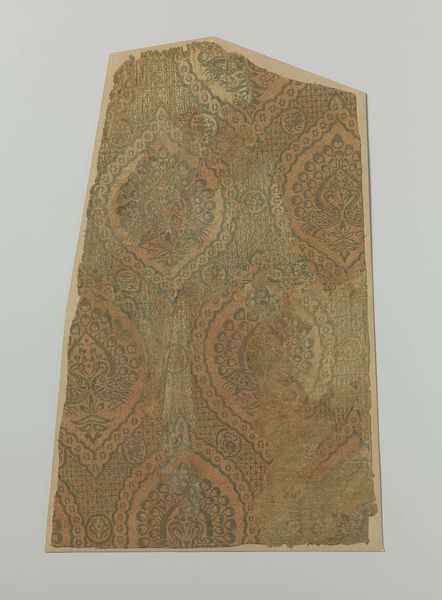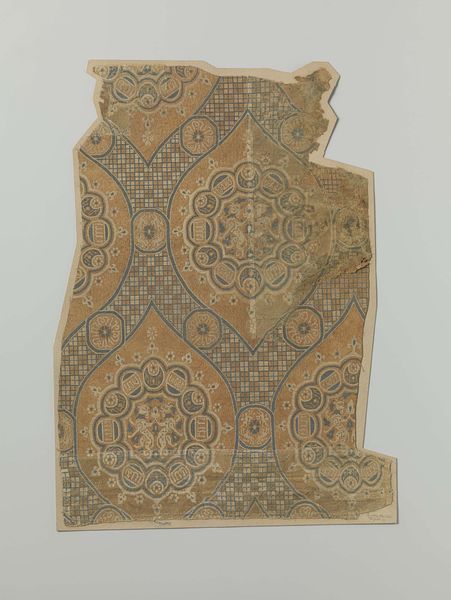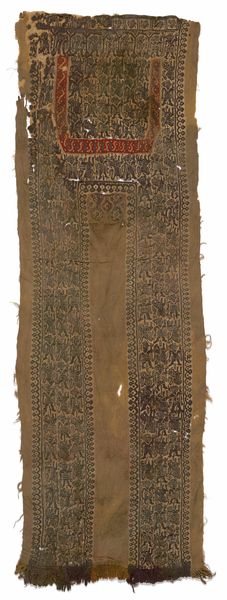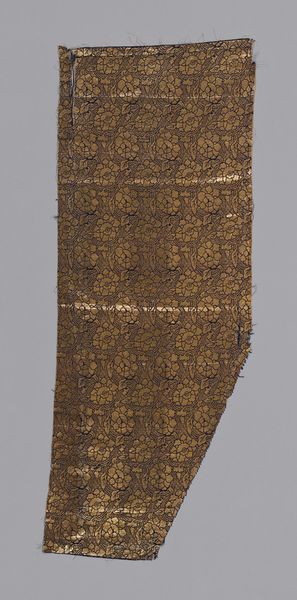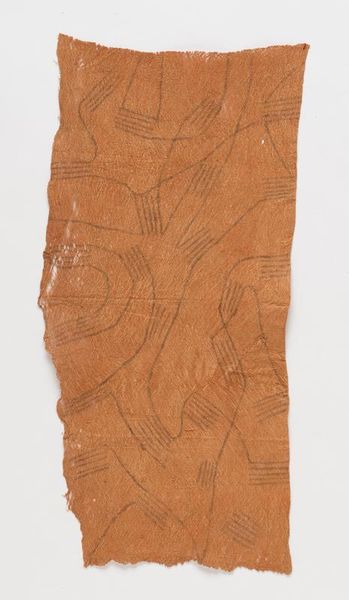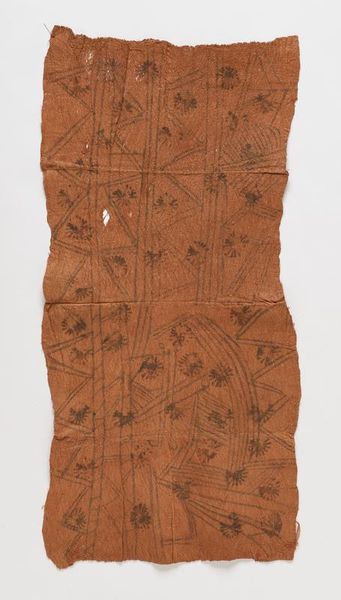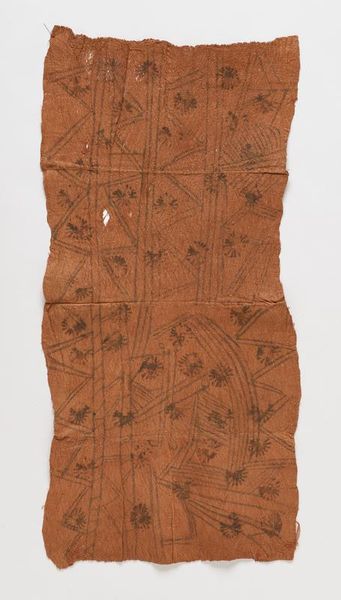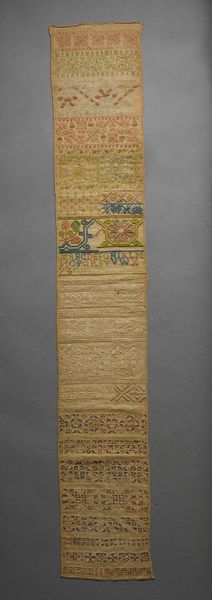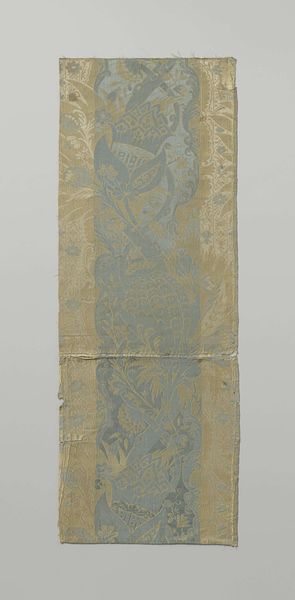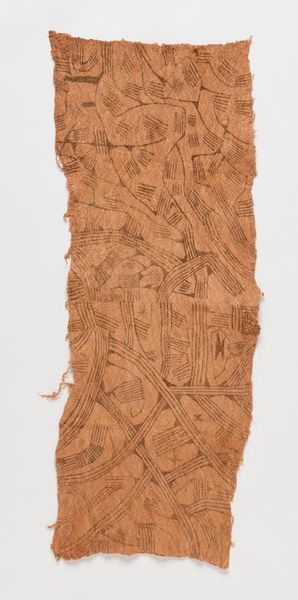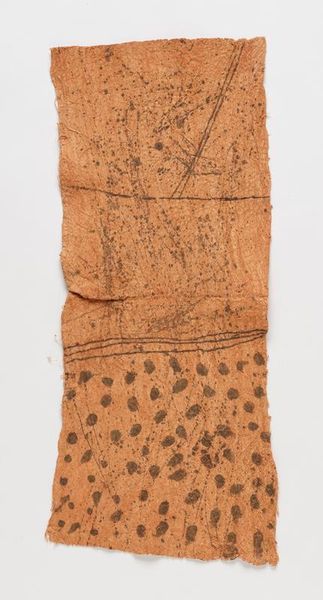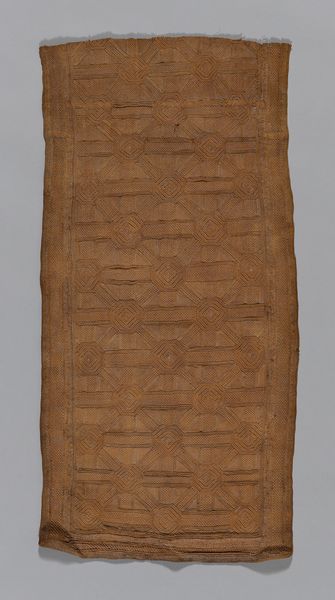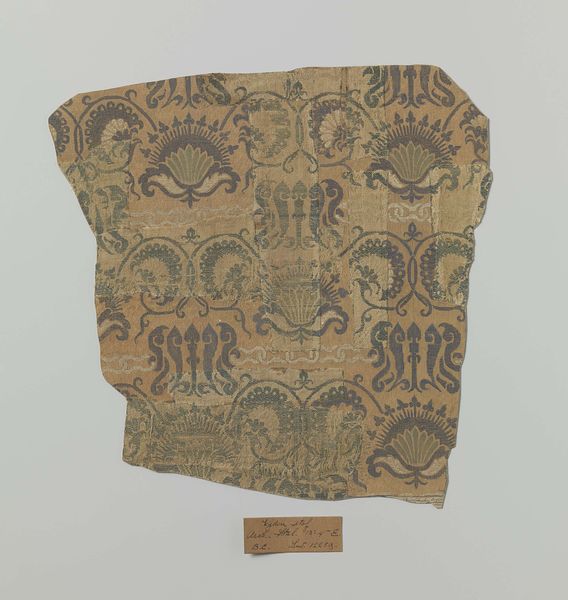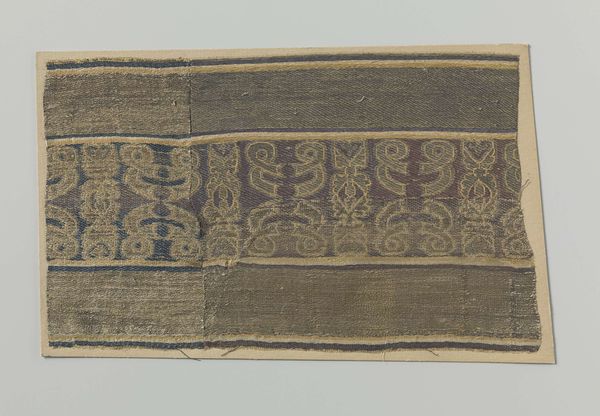
mixed-media, textile
#
aged paper
#
mixed-media
#
toned paper
#
pattern
#
textile
#
paper texture
#
islamic-art
Dimensions: height 41.0 cm, width 23.5 cm, height 14.0 cm, width 9.5 cm
Copyright: Rijks Museum: Open Domain
Curator: Let’s explore this intriguing “Fragment zijdeweefsel,” or "Fragment of Silk Weave" as we would say in English. Though dated from approximately 1200 to 1904, the creation process behind it remains anonymous. What are your immediate impressions? Editor: The color palette is so muted, almost ghostly. And yet, the complexity of the pattern speaks of tremendous labor. It’s both beautiful and haunting. Curator: Exactly. Let's consider that labor. This textile, or what’s left of it, hints at the meticulous craft traditions of Islamic art. It suggests an intense process of material selection and the highly skilled hands that wove the intricate design. Who were these workers? Editor: I see echoes of larger historical narratives in those patterns, especially regarding the global textile trade and colonial exploitations. We might consider who wore such fabrics, and who was systematically excluded from the same comforts and dignities. Curator: Absolutely. Even the term "Islamic Art" is complicated; its use here flattens nuances across geographic boundaries, historical moments, and countless individuals who created this art for diverse motivations. And of course the use of silk... Editor: Precisely! The fact it's a fragment also provokes reflection. It is suggestive of lives disrupted and untold, isn’t it? We could analyze it through theories of gender, class, and race. It is so rich, even as a fragment. Curator: Thinking of the material's inherent properties helps to tell the stories embedded in this remnant. It suggests complex networks of skill-sharing, the organization of craft industries, the consumption of goods and the status they conferred. Editor: These objects provide vital traces of otherwise undocumented histories, stories of resistance and subversion in their design, construction, and deployment within various social practices and events. I wonder what further stories its future can unlock. Curator: It definitely forces us to ask what survives and how. We can begin with an open mind that accounts for cultural labor, class differences and power dynamics. Editor: That's a call to look closely and challenge narratives we automatically believe as objective reality. Thank you, this was deeply enriching.
Comments
No comments
Be the first to comment and join the conversation on the ultimate creative platform.
